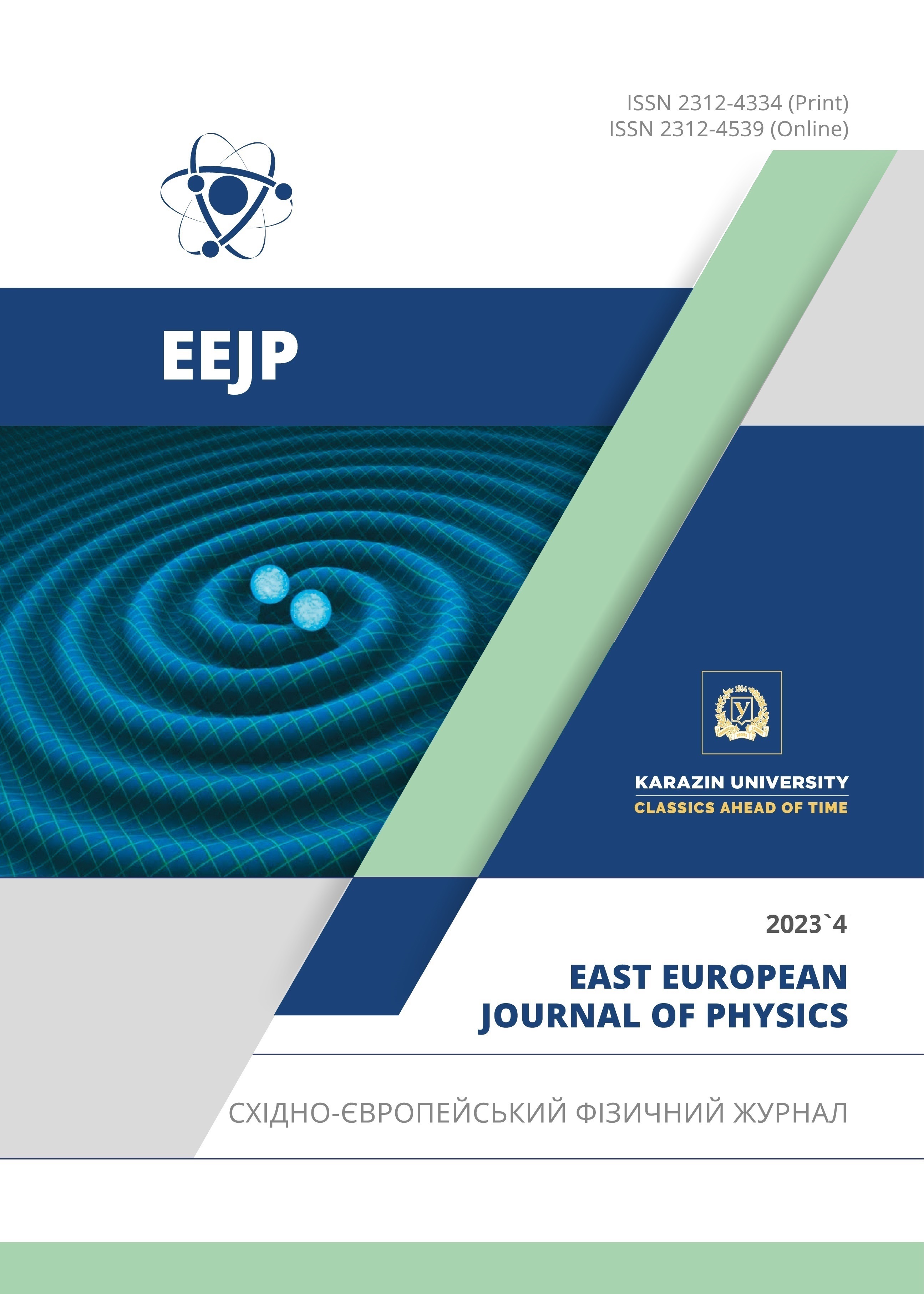The Computer Model of a Thermal Delayed Neutron Fluxes Forming System for Nuclear Medicine
Abstract
In the work the computer model of a cell of a system for generating fluxes of therapeutic beams of delayed neutrons, based on the use of delayed fission neutrons, was developed in the Geant 4 environment. The principle of such a neutron source is that when a powerful electron beam interacts with a combined tungsten target and a target containing fissile material, a fission reaction occurs; as a result of which neutrons are emitted. If we move a target activated in this way several tens of meters into a neutron flux generation system consisting of a heater, protection, collimator and reflector, we will obtain a compact neutron source for nuclear medicine. A significant advantage of such a neutron source is the absence of gamma background from the electron accelerator and the combined target, and a bulky protection system is not required. In the Geant 4 environment, the geometry of this cell was developed and a series of experiments were carried out with 107 neutrons. The QGSP BIC HP physical sheet was used. A study of neutron energy spectra showed that more than half of the neutrons whose fluxes are formed using such a cell of the formation system have an energy <100 keV, which is suitable for use for therapeutic purposes. Analysis of the data obtained in a computer experiment made it possible to develop a modified cell of the system for generating streams of therapeutic beams of delayed neutrons, which differs from the basic one by the presence of a solid polyethylene moderator with holes for activated targets and a graphite reflector. Analysis of the data obtained showed that in this case the number of thermal neutrons hitting the detector increases 10 times compared to the base cell, and the energy of 80% of the particles does not exceed 5 keV, which is much better suited for therapeutic purposes.
Downloads
References
G.L. Locher, Am. J. Roentgenol. Radium. Ther. 36, 1 (1936).
A.M. Hughes, and N. Hu, Cancers, 15(16), 4091 (2023). https://doi.org/10.3390/cancers15164091
A. Wittig, and W.A.G. Sauerwein, Cancer Biother. Radiopharm. 38(3), 195 (2023). https://doi.org/10.1089/cbr.2022.0074
X. Cheng, F. Li, and L. Liang, Current Oncology, 29(10), 7868 (2022). https://doi.org/10.3390/curroncol29100622
L.-W. Wang, Y.-W.H. Liu, and F.-I. Chou, Cancer Communications, 38, 1 (2018). https://doi.org/10.1186/s40880-018-0295-y
L. Porra, T. Seppälä, L. Wendland, H. Revitzer, H. Joensuu, P. Eide, H. Koivunoro, et al., Acta Oncologica, 61(2), 269 (2021). https://doi.org/10.1080/0284186X.2021.1979646
L. Porra, L. Wendland, T. Seppälä, H. Koivunoro, H. Revitzer, J. Tervonen, L. Kankaanranta, et al., Cancer Biother. Radiopharm. 38(3), 184 (2023). https://doi.org/10.1089/cbr.2022.0059
V. Kasilov, S. Gokov, S. Kalenik, S. Kochetov, L. Saliy, V. Tsyats’ko, E. Tsyats’ko, and O. Shopen, East European Journal of Physics, (4), 160-163 (2021). https://doi.org/10.26565/2312-4334-2021-4-21
S.P. Gokov, S.H. Karpus, V.I. Kasilov, G.D. Kovalenko, and S.S. Kochetov, Problems of Atomic Science and Technology, 3(145), 133 (2023). https://doi.org/10.46813/2023-145-133
Geant4 Collaboration, Physics Reference Manual,
https://geant4 userdoc.web.cern.ch/UsersGuides/ForApplicationDeveloper/BackupVersions/V10.6c/fo/BookForApplicationDevelopers.pdf
Copyright (c) 2023 Sergey P. Gokov, Viktor M. Horbach, Valentin I. Kasilov, Ludmila M. Kolpakova, Olena A. Lyukhtan, Evgen V. Tsiats’ko

This work is licensed under a Creative Commons Attribution 4.0 International License.
Authors who publish with this journal agree to the following terms:
- Authors retain copyright and grant the journal right of first publication with the work simultaneously licensed under a Creative Commons Attribution License that allows others to share the work with an acknowledgment of the work's authorship and initial publication in this journal.
- Authors are able to enter into separate, additional contractual arrangements for the non-exclusive distribution of the journal's published version of the work (e.g., post it to an institutional repository or publish it in a book), with an acknowledgment of its initial publication in this journal.
- Authors are permitted and encouraged to post their work online (e.g., in institutional repositories or on their website) prior to and during the submission process, as it can lead to productive exchanges, as well as earlier and greater citation of published work (See The Effect of Open Access).








